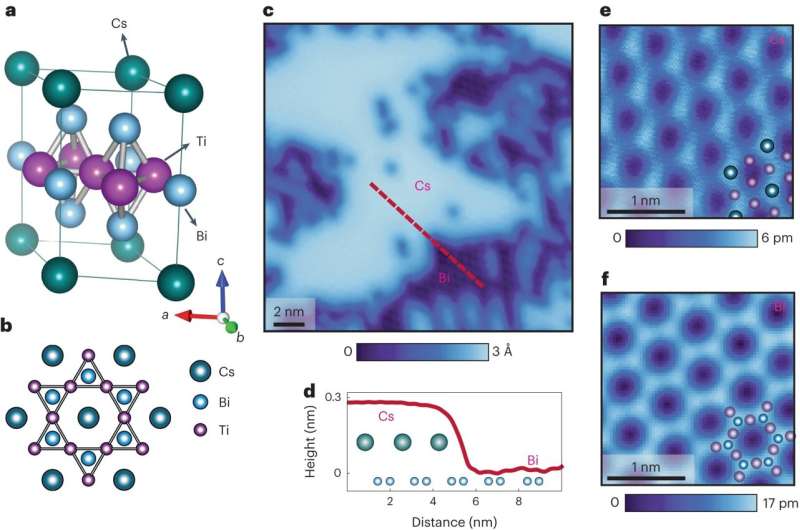This article has been reviewed according to Science X's editorial process and policies. Editors have highlighted the following attributes while ensuring the content's credibility:
fact-checked
peer-reviewed publication
trusted source
proofread
Researchers reveal electronic nematicity without charge density waves in titanium-based kagome metal

Electronic nematic order in kagome materials has thus far been entangled with charge density waves. Now it is finally observed as a stand-alone phase in a titanium-based Kagome metal, a team of researchers led by Boston College physicists reported recently in Nature Physics.
Quantum materials composed of atoms arranged on a kagome net of corner-sharing triangles present an exciting platform to realize novel electronic behavior, paper co-author and Boston College Professor of Physics Ilija Zeljkovic explained.
There is a wide array of transition metal atoms that can be used to populate the kagome layers in materials that have been synthesized to date. Materials based on vanadium kagome layers with AV3Sb5 chemical formula—a material composed essentially of vanadium and antimony—emerged as rare examples of kagome superconductors.
The system interests researchers since it showcases intriguing similarities to high-temperature superconductors, such as space-modulating charge density waves and electronic directionality. Electronic unidirectionality can be viewed as electrons being able to travel faster or slower along different crystalline directions. In these systems, electronic unidirectionality was always accompanied and seemingly generated by charge density waves, or periodic spatially-modulated charge density, which also appears unidirectional.
The team studied bulk single crystals of a recently discovered family of titanium-based kagome metals that essentially consist of titanium and bismuth, known specifically as ATi3Bi5—where A represents either cesium and rubidium. This system has the same crystal structure as AV3Sb5, but with a kagome net of titanium atoms replacing the vanadium (V), and bismuth (Bi) substituting for antimony (Sb).
To reveal the energy and momenta of electrons in the material, the team used scanning tunneling microscopy and spectroscopy to image the electronic band structure, said Zeljkovic.
"We wanted to see if electronic unidirectionality can exist without the accompanying charge density waves," said Zeljkovic. "This phase is termed electronic nematic order, which entails breaking the rotational symmetry of the system without also breaking the translational symmetry, which is what charge density waves cause."
For example, a perfect hexagon is rotationally symmetric, but a slightly elongated, or stretched, hexagon would be considered "nematic." ATi3Bi5 presented an ideal platform to explore this due to being isostructural to heavily studied AV3Sb5, but showed no charge density waves.
The STM measurements confirmed the absence of charge density waves in the material, reported the team, which included Boston College Professor of Physics Ziqiang Wang and students Hong Li, Siyu Cheng, and Keyu Zeng; as well as colleagues from UC Santa Barbara, Israel's Weizmann Institute of Science, and Germany's Ludwig-Maximilians University.
"Importantly we detected a substantial electronic unidirectionality, with a single preferred direction, in how electrons interact with one another," said Zeljkovic. "More precisely, electrons, which can be thought of as waves, scatter and interfere with one another, forming standing waves. We discovered that the standing waves appear more intense in one particular direction."
Other researchers have found superconductivity in the same single crystals; however, Zeljkovic said the resistivity and magnetization analysis did not detect superconductivity in their samples.
Zeljkovic said next steps in his team's research will involve understanding what drives the variation in superconducting properties across different samples grown by different collaborations, and how electronic unidirectionality detected here affects superconductivity.
More information: Hong Li et al, Electronic nematicity without charge density waves in titanium-based kagome metal, Nature Physics (2023). DOI: 10.1038/s41567-023-02176-3
Journal information: Nature Physics
Provided by Boston College




















